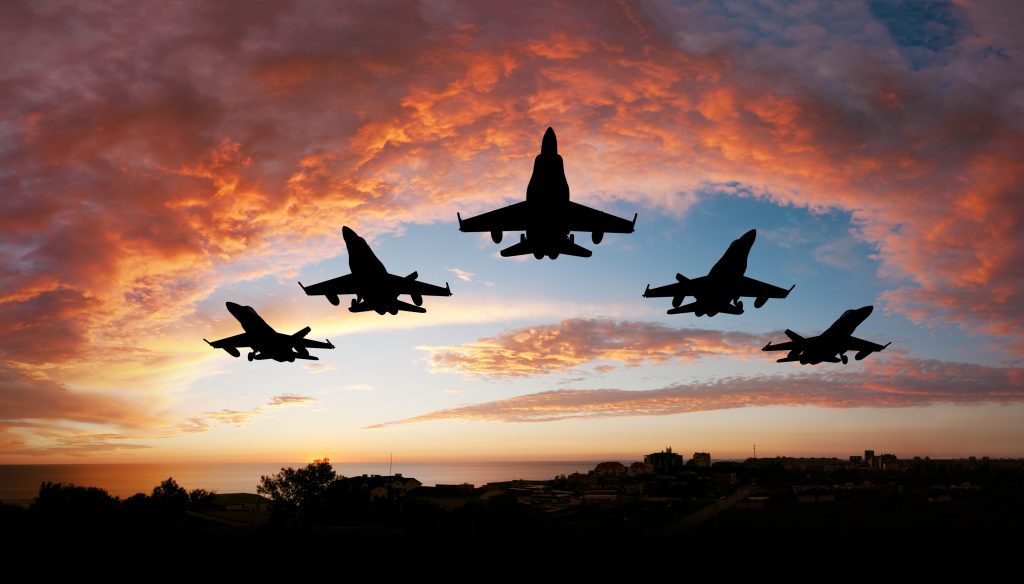
The Impact Of Traveling Wave Tubes On Defence Capabilities: A Supply Chain Perspective
Technology is constantly evolving and innovating in the field of defence capabilities. At the forefront of these advancements is the traveling wave tube (TWT), a crucial component in many applications, including radar systems, electronic warfare, communication systems, and space applications. Their ability to amplify radio frequency signals makes them essential in modern defence systems. But there’s more to the story than just their technical capabilities. The supply chain behind TWTs is complex and fascinating, affecting not only defence capabilities but also economic and logistical considerations.
The Impact Of TWTs On Defence Capabilities
The impact of travelling wave tubes on defence capabilities is unmistakable. Here are some key areas where TWTs have made a difference:
- Pioneering Progress In Ground-Based Radar Systems
TWTs, with their high-power and broadband capabilities, have significantly enhanced the sensitivity of ground-based radar systems. Their ability to amplify radio frequency signals means more accurate detection and tracking of terrestrial targets.
This development has allowed for the creation of more detailed radar images and improved target identification, consequently advancing the effectiveness of defence systems.
- Empowering Electronic Warfare
The role of TWTs in electronic warfare cannot be understated. These devices are integral to the jamming of enemy signals, offering a significant tactical advantage on the battlefield.
By disrupting the enemy’s communication channels, defence forces can weaken opposing strategies and gain the upper hand.
- Facilitating Long-Distance Communication
In the realm of communication systems, TWTs prove their worth yet again. They facilitate long-distance, high-frequency transmissions, ensuring seamless coordination among defence units.
This attribute is especially vital in scenarios where reliable communication can make the difference between success and failure.
- Elevating Space Applications
TWTs are integral to space applications, particularly in satellite communications. Their capacity to transmit high-frequency signals over vast distances enables crucial data transmission between the Earth and orbiting satellites, facilitating deep space exploration.
Moreover, they enhance the sensitivity and accuracy of satellite-based detection systems, a vital aspect in tasks such as weather forecasting, earth observation, and surveillance.
As you can see, TWTs have profoundly transformed defence capabilities across radar systems, electronic warfare, communication systems, and space applications. Their significant contributions in these areas highlight their indispensable role in modern defence technology.

Evolution Of TWTs: Keeping Up With Changing Defence Needs
As defence needs continue to evolve, TWTs are rising to the challenge in several significant ways:
- Increased Power And Frequency Range: TWTs have become more powerful and capable of handling broader frequency ranges to meet the growing demands of defence systems.
- Miniaturisation: The advent of miniaturisation technologies has allowed TWTs to become more compact, enabling more efficient use of space in defence systems without compromising power or frequency capabilities.
The continuous evolution of TWTs highlights their crucial role in adapting to the changing needs of the defence sector.
The Supply Chain Perspective: From Raw Materials To End Product
Shifting our lens to the supply chain, the production of TWTs is a complex process.
- Sourcing Strategies: The procurement of raw materials, which are often rare and expensive, marks the beginning of the TWT production process. Sourcing these materials reliably and ethically is a significant task.
- Manufacturing Processes: The manufacturing phase requires a combination of skilled labour and precision engineering. The evolution of TWTs necessitates advanced manufacturing techniques, impacting workforce training and development.
- Distribution Processes: Once the TWTs are manufactured, they must be delivered to the right place at the right time. Given the critical role of TWTs in defence systems, any delay or mishap in distribution can have far-reaching consequences.
The supply chain process of TWTs, from sourcing to distribution, mirrors the complexity and dynamism of the defence technology ecosystem.
Addressing Challenges In The TWT Supply Chain
The TWT supply chain, like any other, faces various challenges:
- Disruptions In Raw Material Supplies: Potential disruptions in the supply of raw materials pose significant risks.
- Reliance On Limited Manufacturers: A heavy dependence on a limited number of suppliers or manufacturers increases vulnerability to various risks, such as supplier bankruptcy or geopolitical instability.
To manage these challenges, consider the following risk management strategies:
- Diversifying Supplier Networks: Expanding and diversifying supplier networks can mitigate risks associated with reliance on a limited number of suppliers.
- Investing In Research And Development: This can lead to the discovery of alternatives to scarce resources, further securing the supply chain.
- Implementing Stringent Quality Control Measures: Such measures ensure the production of high-quality TWTs, maintaining the integrity and reliability of defence systems.
Addressing these challenges is key to maintaining a resilient and effective TWT supply chain.
The Future of TWTs And Their Supply Chain
As TWTs continue to evolve, they unlock new possibilities while also introducing new challenges. Technological advancements are constantly enhancing TWTs’ capabilities, especially in data transmission.
This improvement is not confined to defence applications but also extends to commercial and medical sectors. The dynamic interaction across these industries implies a promising future for TWTs.
On the supply chain front, adaptability and resilience will become even more essential. Lessons from past disruptions, including natural disasters and global pandemics, have highlighted the need for agile and flexible supply chains.
The integration of AI and data analytics is anticipated to be vital in managing these complexities, facilitating effective risk mitigation and robust recovery strategies.
Furthermore, geopolitical shifts and potential disruptions will require strategic decision-making, such as considering the balance between maintaining current operations and investing in diversified, resilient systems.
Final Thoughts
In sum, the influence of TWTs on defence capabilities extends far beyond their technical contributions. They significantly impact the supply chain, affecting elements from sourcing and manufacturing to distribution and risk management.
As we move forward into the future, understanding and addressing these supply chain considerations will be crucial for maintaining and enhancing our defence capabilities.

IoSCM are proud to be Gold Award holders of the Armed Forces Covenant for our commitment to supporting the Armed Forces Community.
